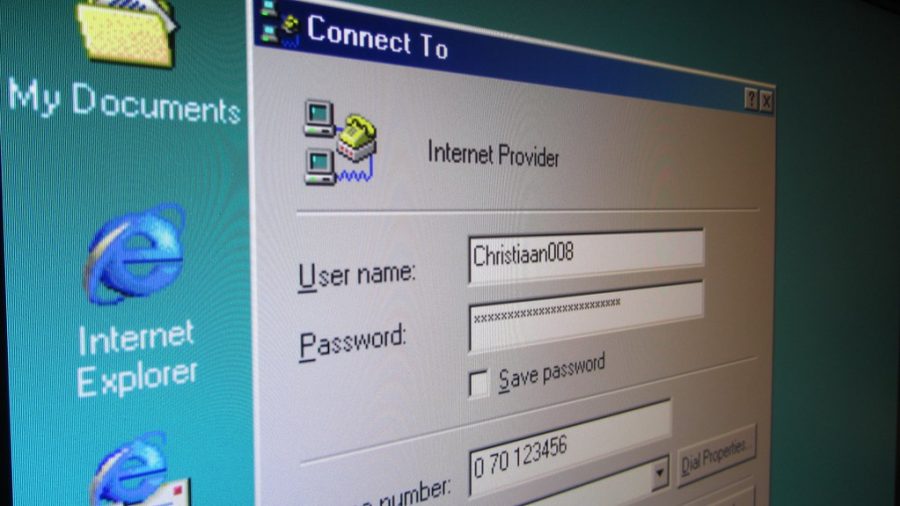Welcome To The Future: BHS Upgrades To Dial-Up Internet
Photo by Christiaan Colen
A student at BHS testing out our new Internet Provider!
April 1, 2021
After recording a promotional piece to motivate students to attend virtual classes instead of sleeping in, de facto principal Michael Scott walked off the green screen set to a flood of complaints and concerns about the school’s internet. People have been complaining for years about the sluggish load times while on the network, especially during passing time as every student opens their phone to check their social media feeds. However, the school had bigger fish to fry and ignored the issue, which was figuring out a schedule to intentionally complicate students’ lives during exam season.
What encouraged the administration to bite the bullet to install a new low-tech dial up internet was discovering that the school’s internet was too slow to upload the video Michael Scott had just recorded. At a lousy 3 kilobytes per second, the 3 gigabyte file would take nearly two weeks to be uploaded to the school’s official YouTube channel. Finding this amount of time unacceptable for any working environment, contractors could be spotted in the main office the next day mapping out a schematic for a new network.
“Our current internet speeds are astronomically low. In the amount of time it takes me to upload one PDF to my work drive, I could go out, eat lunch, drive to the beach, take an hour long nap, and drive back,” world language teacher Buenos Dias said. “The file would still probably have another 30 minutes or so after that.”
A notable part of the design is the removal of all dockets from classrooms. When the school was initially built, architects failed to consider the consequences of using brick; a strong connection in one classroom was practically nonexistent in the adjacent one. This problem was only discovered after the school was completed, and therefore plans could not be changed. To remedy lacking speeds at the time, the school spent thousands of dollars implementing custom hubs in every classroom so everyone could have access to high-speed internet. While the school refreshingly had a well-thought out plan, their servers were not robust enough to handle the extreme load of hundreds of people simultaneously using the network at once, straining speeds at best and frequently crashing the server at its worst. Now that the school is revisiting their old hack job, the custom dockets are being removed in favor of faster, larger ports placed in the hallways angled into classrooms.
“Although I’m glad a new network is being installed, the downtime of waiting for everything to happen is arguably worse. Now I can’t complete any work instead of it taking 8 hours,” said English teacher Caroline Booker.
Among students, the plan for a faster network is a welcome one, even if their priorities are slightly different than diligent teachers.
“One advantage of the entire situation is that the website blacklist is going to be completely reset. That means I can browse Twitter and my favorite game’s website for entertainment instead of having to consume my entire data plan in class,” said sophomore Blake Gamer.
Although literally every data plan offered by monopolistic companies has faster download speeds than the school’s internet, it’s reassuring to know that Barnstable is only several years behind innovating to the most recent, quickest technology. Tune in next decade when the school provides everyone with a laptop that isn’t made of cheap plastic and doesn’t have important educational sites blocked in the name of student protection.


